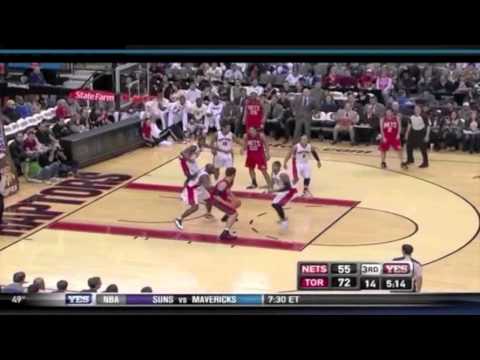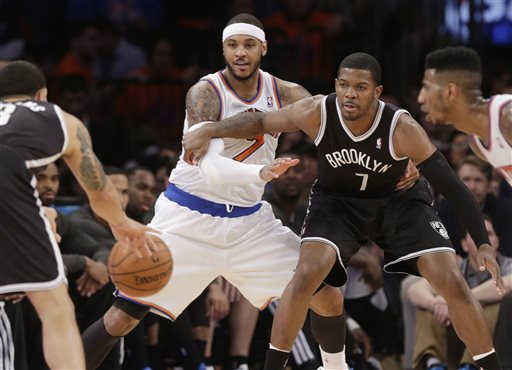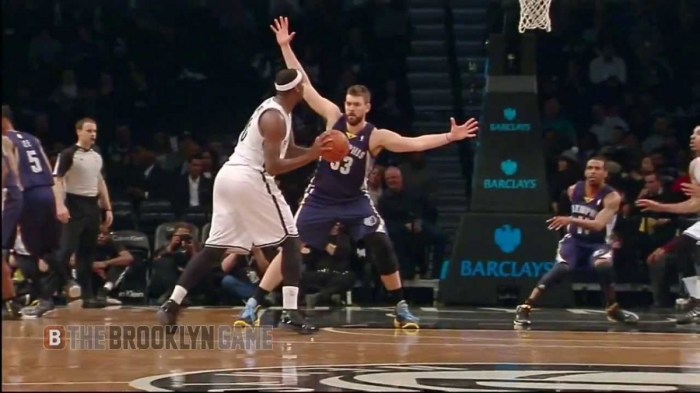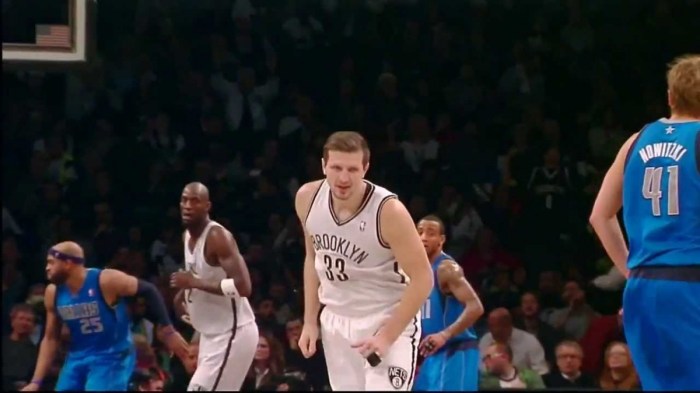To improve in the future, the Nets will have to learn from the mistakes of the past. In this weekly series, Nets are Scorching writers Justin DeFeo and Devin Kharpertian take a look at how the Nets performed in different sets on both sides of the ball during the 2010-11 season.
In today’s Nets strategy I am going to be looking at some of the Nets’ break downs in their transition defense.
In transition opportunities, the defense is often outnumbered, back pedaling and generally at a disadvantage compared to the offense. Transition defense takes some sound principles and a lot of practice to become good at. In the following clips we’ll take a look at some of the areas the Nets need to improve on in order to play better transition defense.
Turnovers
There’s an old saying the best offense is a good defense and vice versa, the best defense is a good offense. The Nets finished last season tied for 12th in the league checking in at 14 turnovers per game. Live ball turnovers obviously put your defense in a bad spot, without proper floor balance and sometimes with no players back. Live ball turnovers often lead to baskets. Let’s take a look at how some of our sloppy ball handling affects our transition defense.
Not Stopping the Ball
The most dangerous player in any defensive transition situation is the player with the ball. Therefore the first priority in a retreating defense is finding the ball and stopping it. I relate it to a fire breaking out in a kitchen (the player with the ball) and someone grabbing a fire extinguisher (first on the ball defender) and just trying to control the flames until further help arrives. The objective being to wall off the paint and impede the ball handler or getting the player with the ball to make non-penetrating passes, therefore slowing the break and allowing for more defensive numbers to join the play. With the type of athletes that play in the NBA that is easier said then done, but here are some clips of the Nets doing a poor job of this.
Slow Back In Transition
After the ball is stopped, it’s up to the rest of the defense to get back to the paint and defend out. This requires first and foremost effort and primarily sprinting. This is an area where the Nets could have done better a better job. In the clips you’ll even see a transition opportunity created by the Knicks after a Nets made basket, which is pretty inexcusable. You’ll notice four of the Nets casually getting back on defense as Chauncey Billups fires the ball down the court to an open shooter. In the second clip, Nets reserve center Dan Gadzuric simply gets out-hustled down the floor by D.J. White causing a transition dunk.
Not Locating Shooters
Possibly the final aspect of the transition defense. After you have the ball stopped, after the rest of the team has sprinted back to the paint, it’s time to turn around and defend out. During the retreating process, the Nets should be communicating as to who has the ball and the other four should be making decisions based off that. In this clip, Sasha Vujacic is the culprit. As the last defender back in transition, he should be recovering furthest away from the ball. Instead, Vujacic is either confused as to if he should be guarding the ball or not, or he makes an ill fated decision to try and double-team and trap the ball. None of the other Net defenders really do a good job of seeing the floor, and thus the Knicks best player, Carmelo Anthony is left wide open to hoist and make a three pointer.



















